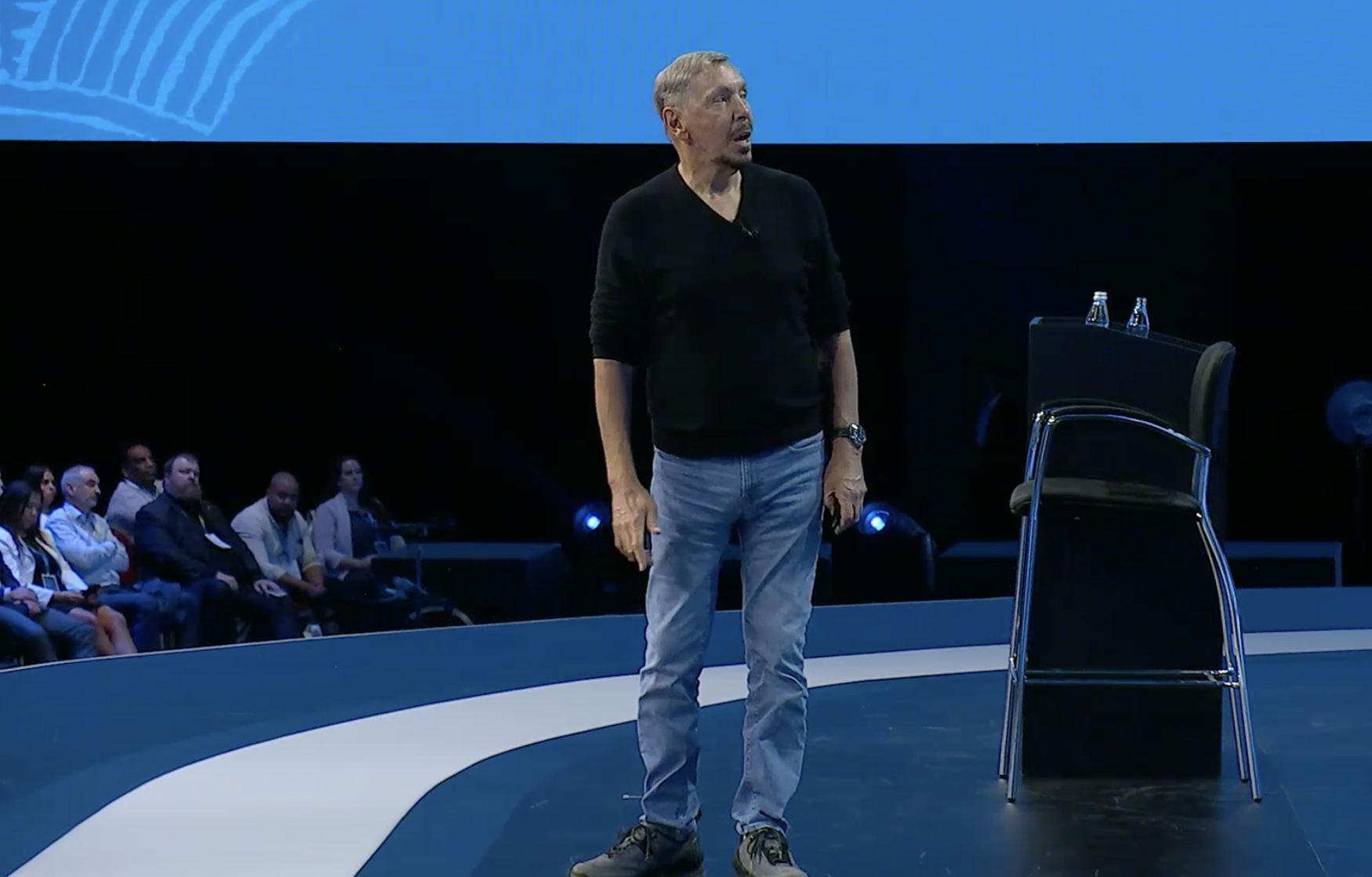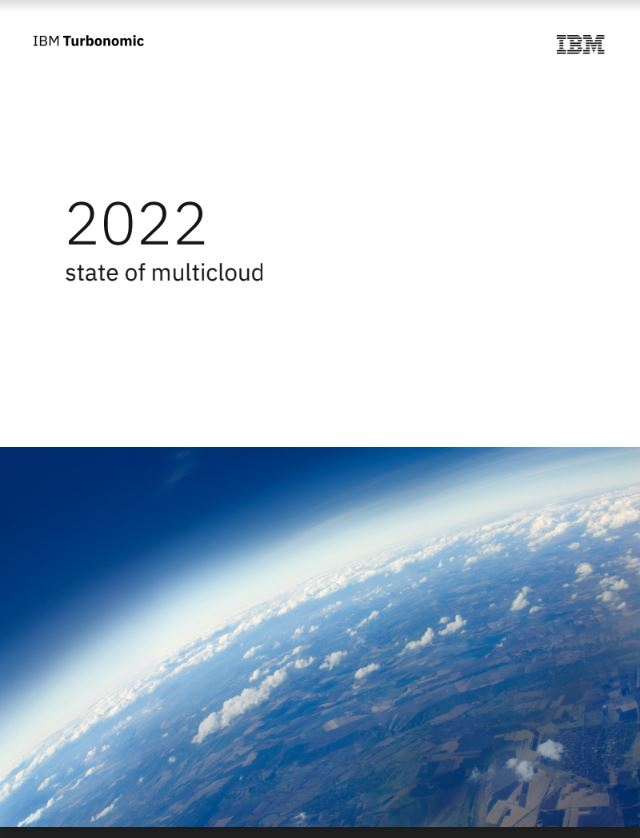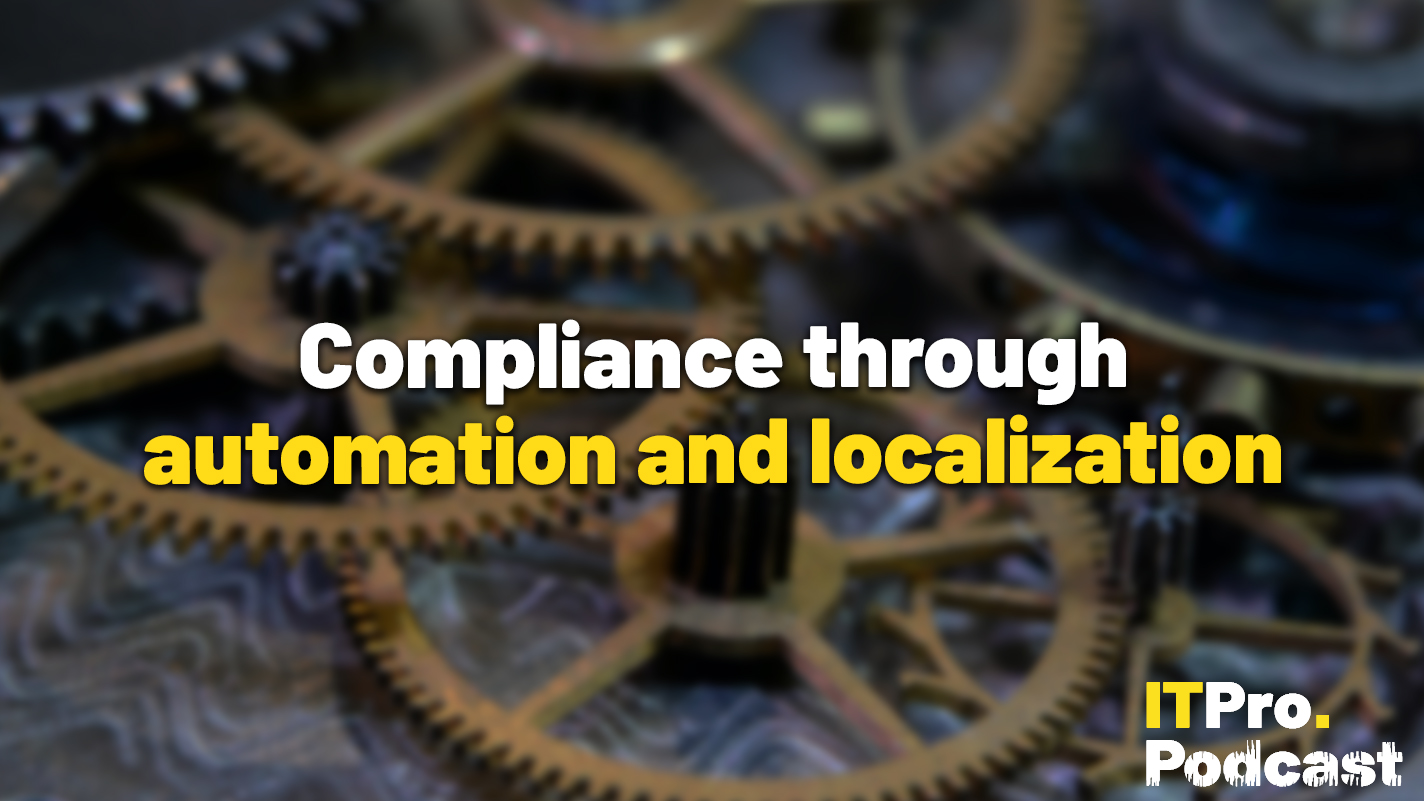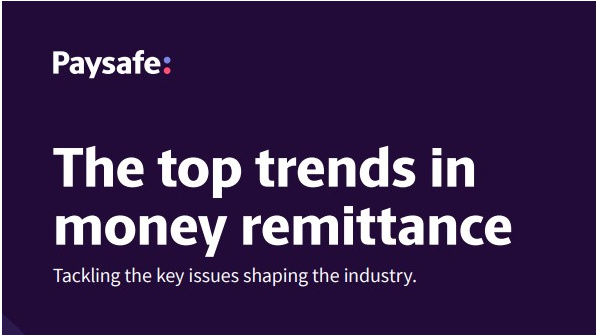Oracle sets out its stall for a new age of multi-cloud
Embracing rival providers with open arms is a bold strategy, one that plays to Oracle’s strengths in infrastructure


The decision to change the name of Oracle’s flagship tech conference from ‘OpenWorld’ to ‘CloudWorld’ doesn’t quite encapsulate its new business strategy. There’s no official explanation for the change, either; we are simply left to assume that it’s about a stronger focus on cloud-based technologies. Despite the name change, Oracle’s attitude to cloud is now more open than ever before.
RELATED RESOURCE

2022 State of the multi-cloud report
What are the biggest multi-cloud motivations for decision-makers, and what are the leading challenges
A better description of what’s going on came from one of its partners; during the opening keynote of this year’s conference, the CIO of the Irish security firm Johnson Controls, Diane Schwarz, used an old African proverb: “If you want to go fast, go alone. If you want to further, go together”.
Today, there are three well-defined leaders in the cloud market – Amazon Web Service (AWS), Microsoft and Google – and some might suggest Oracle isn’t necessarily the fourth biggest, with Alibaba and IBM also jostling for position. Oracle, however, might have identified a winning strategy to break into that top tier by, ironically, working with the other providers. Or, to put it another way, by being more open.
A future of connected clouds
The use of multiple cloud services – buying applications and infrastructure from different providers – has become more popular than some vendors would like. After all, multi and hybrid cloud scenarios haven’t always been championed by the major providers – including Oracle – and that is something Larry Ellison would like to change.
During his afternoon keynote, the Oracle CTO suggested that cloud environments had become more like walled gardens, where the customer puts data in, often for free, but is then penalised if they want to take it out or move it – a process that is known as an ‘egress’ charge.
Nearly all of the leading cloud providers have, at some point, charged for data egress, though many within the industry see it as an inhibitor of innovation. It’s particularly troublesome for smaller businesses, as it makes it almost impossible to predict the full cost of data management. In his keynote, Ellison called for the eradication of egress fees and for the “garden walls to come tumbling down”.
There were a lot of references to AWS within this segment of the keynote, which may have involved a degree of trash-talking in the past. This time, it felt more like a new approach for Oracle, one that is at odds with an industry famous for vendor lock-in. From start to finish, Oracle CloudWorld felt like a grand pitch for a more open, more interoperable, cloud market. The company is investing heavily in a portfolio of services that can be connected with those of other cloud providers – even those that belong to its biggest rivals.
Get the ITPro daily newsletter
Sign up today and you will receive a free copy of our Future Focus 2025 report - the leading guidance on AI, cybersecurity and other IT challenges as per 700+ senior executives
A good example of this is the Oracle and Microsoft multi-cloud deal – Oracle Interconnect for Azure. It’s described as a ‘simple’ path to a multi-cloud environment, with customers able to use Oracle database services, such as MySQL, within Azure over a low-latency connection. In his keynote, Ellison suggested Oracle would look to build more of these connections, for the benefit of the customer. He sees it as the next logical step in cloud computing, dubbing it “an internet of clouds”.
The infrastructure for success
There's one thing that could potentially derail Oracle’s grand connected cloud plan, and that's the willingness of the other providers to open their systems. The main leverage Oracle will have is customer demand, and that's certainly a powerful incentive. It also seems so simple an idea, it’s almost unbelievable that it has taken this long to arrive.
At the heart of Oracle’s plan is the Oracle Cloud Infrastructure (OCI), which is a holistic cloud platform that provides all the necessary controls and tools for customers to build, migrate, and deploy cloud technologies. The vice president of OCI, Leo Leung, told us that the technology for cloud providers to connect has always been there and it's simply a case of industry willingness.
Major companies like Nvidia, Vodafone, and Red Bull are all using OCI in some form as a platform to build their own cloud applications – all three are also customers of the other cloud providers. Vodafone, for example, uses a combination of AWS, Google Cloud, and Oracle.
Oracle Alloy is another fascinating product; it’s a platform that enables other companies to essentially become their own cloud providers. Again, it’s Oracle providing the infrastructure and the customer using it to build or enhance their cloud offerings. These are products that provide a platform but not a limitation because Oracle recognised that choice is an attractive offer.
As Oracle CloudWorld 2022 came to an end, it was hard not to be impressed. As to whether it will work, only time will tell. Could we see an end to vendor lock-in and egress fees in the cloud market? Stranger things have happened, as they say, or as one Oracle executive put it, referencing a new Amazon collaboration with MySQL Heatwave; “Working with AWS... something we would have thought was impossible a few years ago”.
Bobby Hellard is ITPro's Reviews Editor and has worked on CloudPro and ChannelPro since 2018. In his time at ITPro, Bobby has covered stories for all the major technology companies, such as Apple, Microsoft, Amazon and Facebook, and regularly attends industry-leading events such as AWS Re:Invent and Google Cloud Next.
Bobby mainly covers hardware reviews, but you will also recognize him as the face of many of our video reviews of laptops and smartphones.
-
 Should AI PCs be part of your next hardware refresh?
Should AI PCs be part of your next hardware refresh?AI PCs are fast becoming a business staple and a surefire way to future-proof your business
By Bobby Hellard
-
 Westcon-Comstor and Vectra AI launch brace of new channel initiatives
Westcon-Comstor and Vectra AI launch brace of new channel initiativesNews Westcon-Comstor and Vectra AI have announced the launch of two new channel growth initiatives focused on the managed security service provider (MSSP) space and AWS Marketplace.
By Daniel Todd
-
 IBM eyes Oracle expertise gains with latest acquisition
IBM eyes Oracle expertise gains with latest acquisitionNews The deal aims to help IBM address the complexities of public sector cloud transformation
By Emma Woollacott
-
 Channel Focus: All you need to know about Oracle's partner program
Channel Focus: All you need to know about Oracle's partner programWhat to know about partnering with Oracle: A brief guide to the database management software company as it expands further into cloud solutions
By Fleur Doidge
-
 Better together
Better togetherWhitepaper Achieve more with Windows 11 and Surface
By ITPro
-
 Transforming the enterprise
Transforming the enterpriseWhitepaper With Intel and CDW
By ITPro
-
 Compliance through automation and localization
Compliance through automation and localizationITPro Podcast The crossover between automation, localization, and even AI is strong
By Rory Bathgate
-
 Will NetSuite take a cautious approach to AI at SuiteWorld 2023?
Will NetSuite take a cautious approach to AI at SuiteWorld 2023?Analysis Generative AI is likely to loom large over SuiteWorld – but NetSuite may instead bank on boosting its core end-to-end automation tech
By Rory Bathgate
-
 The top trends in money remittance
The top trends in money remittanceWhitepaper Tackling the key issues shaping the money remittance industry
By ITPro
-
 Oracle updates HCM capabilities to focus on value and set employees up for success
Oracle updates HCM capabilities to focus on value and set employees up for successNews Reward and recognition - especially by peers - are key tenets of the update to the Oracle Me employee experience platform
By Maggie Holland